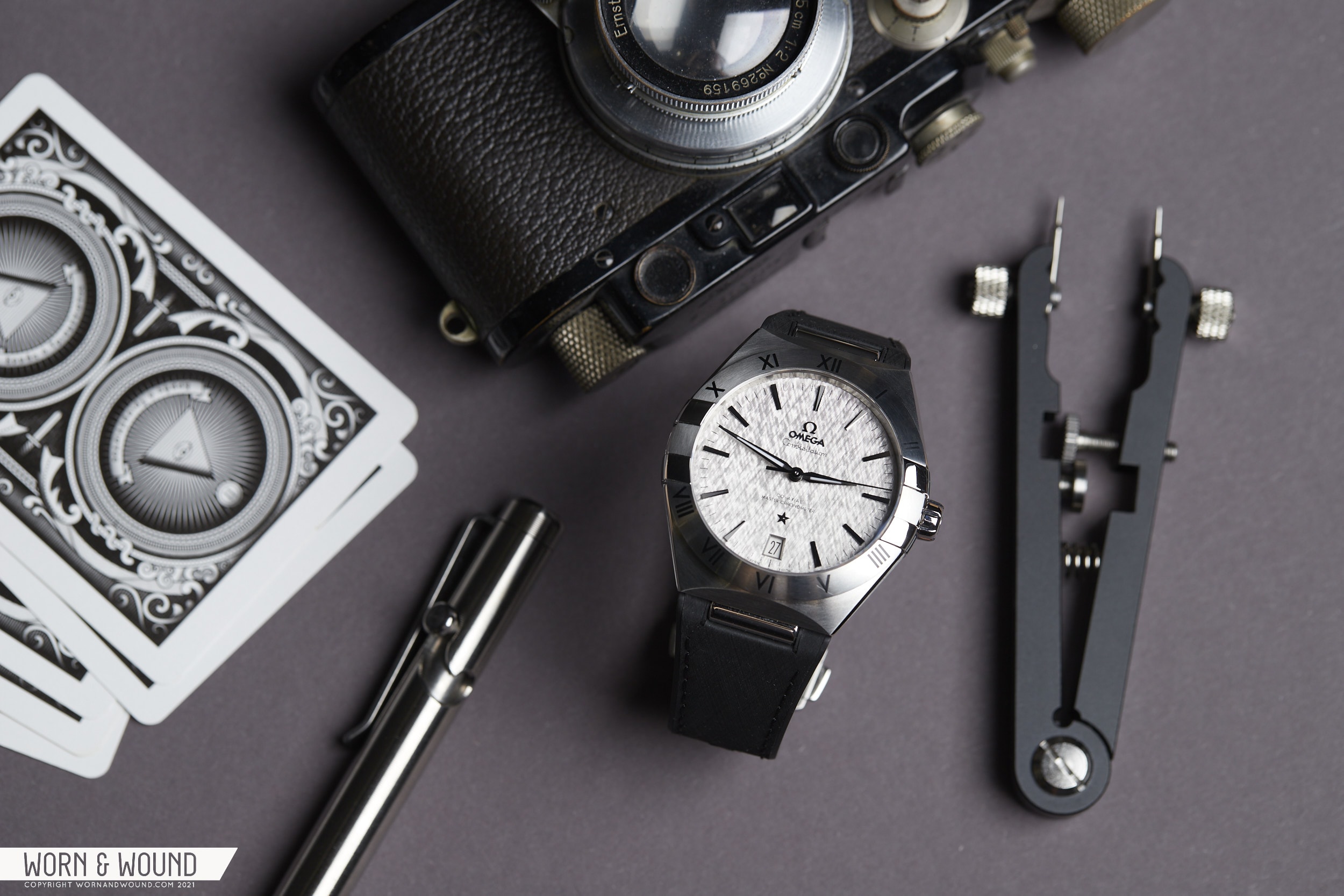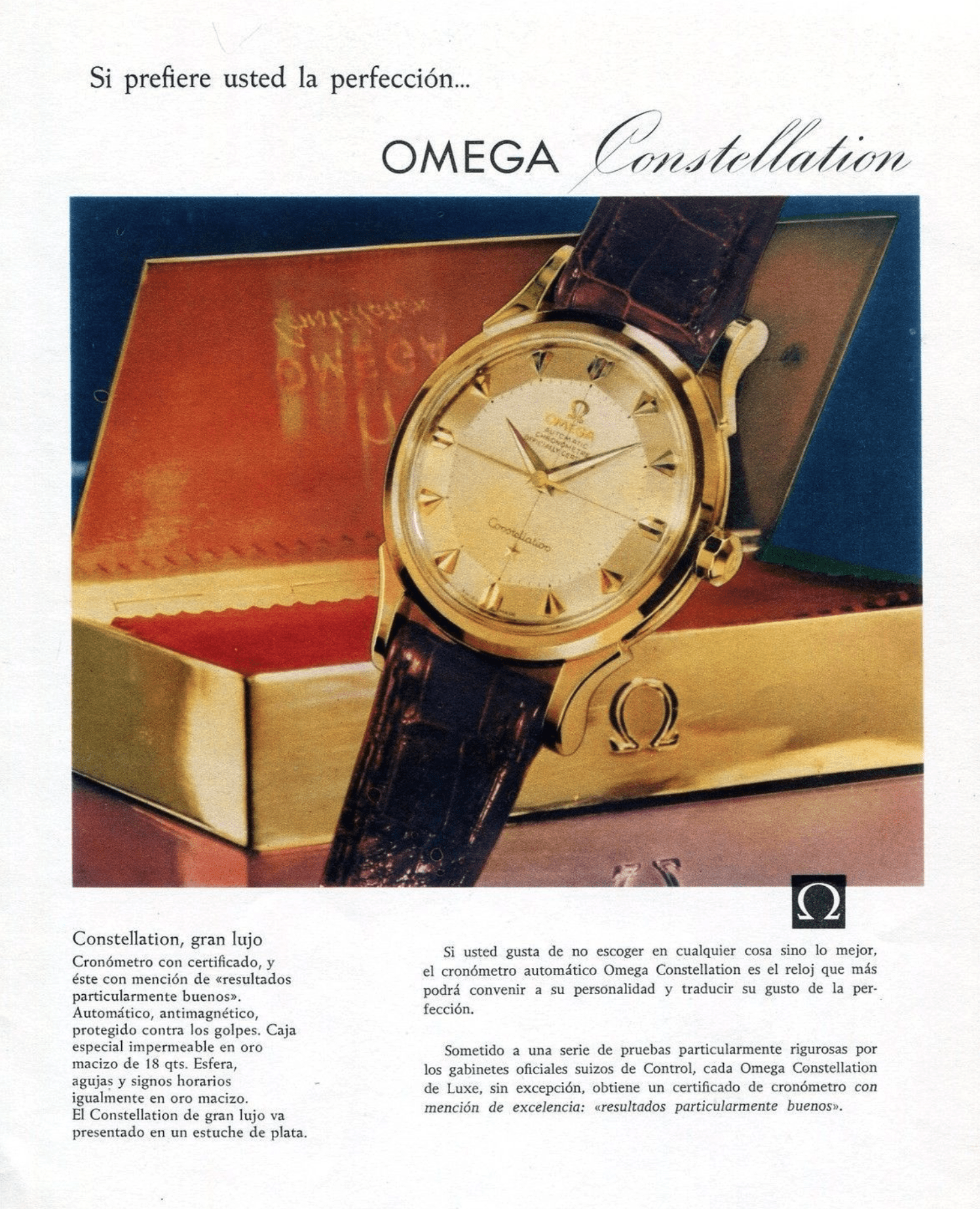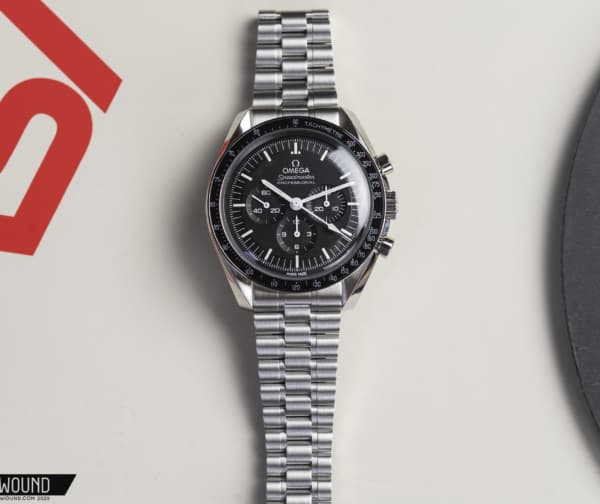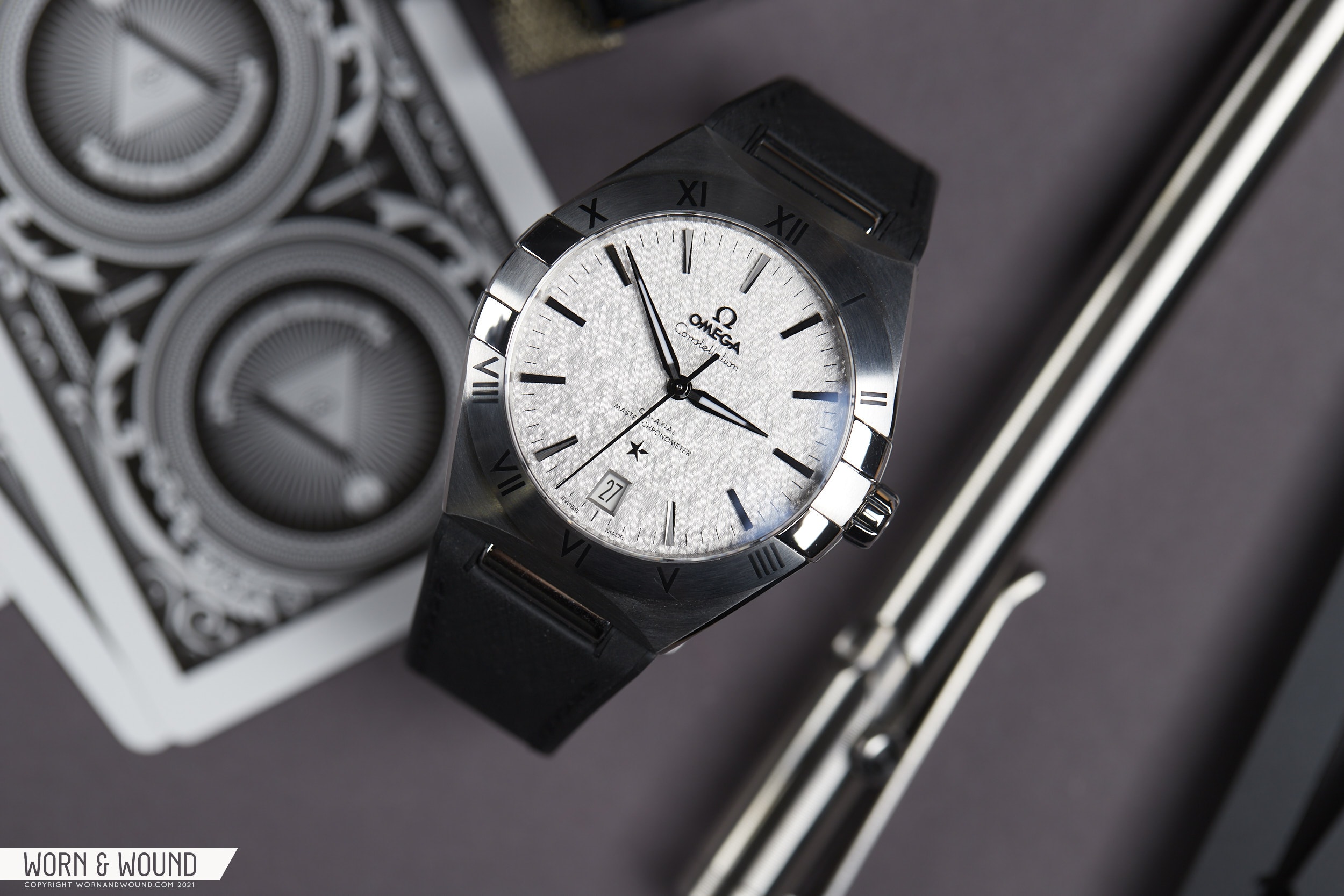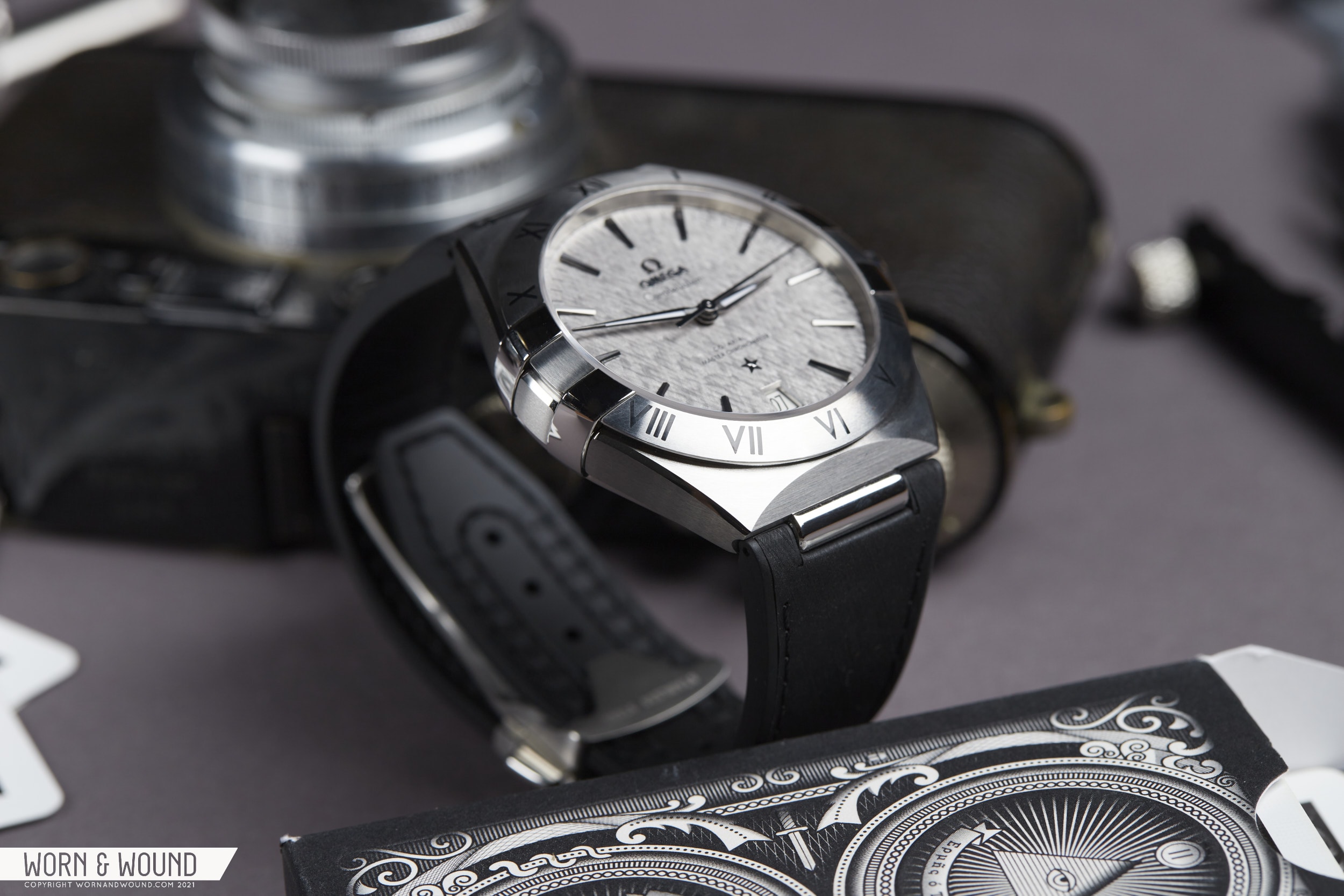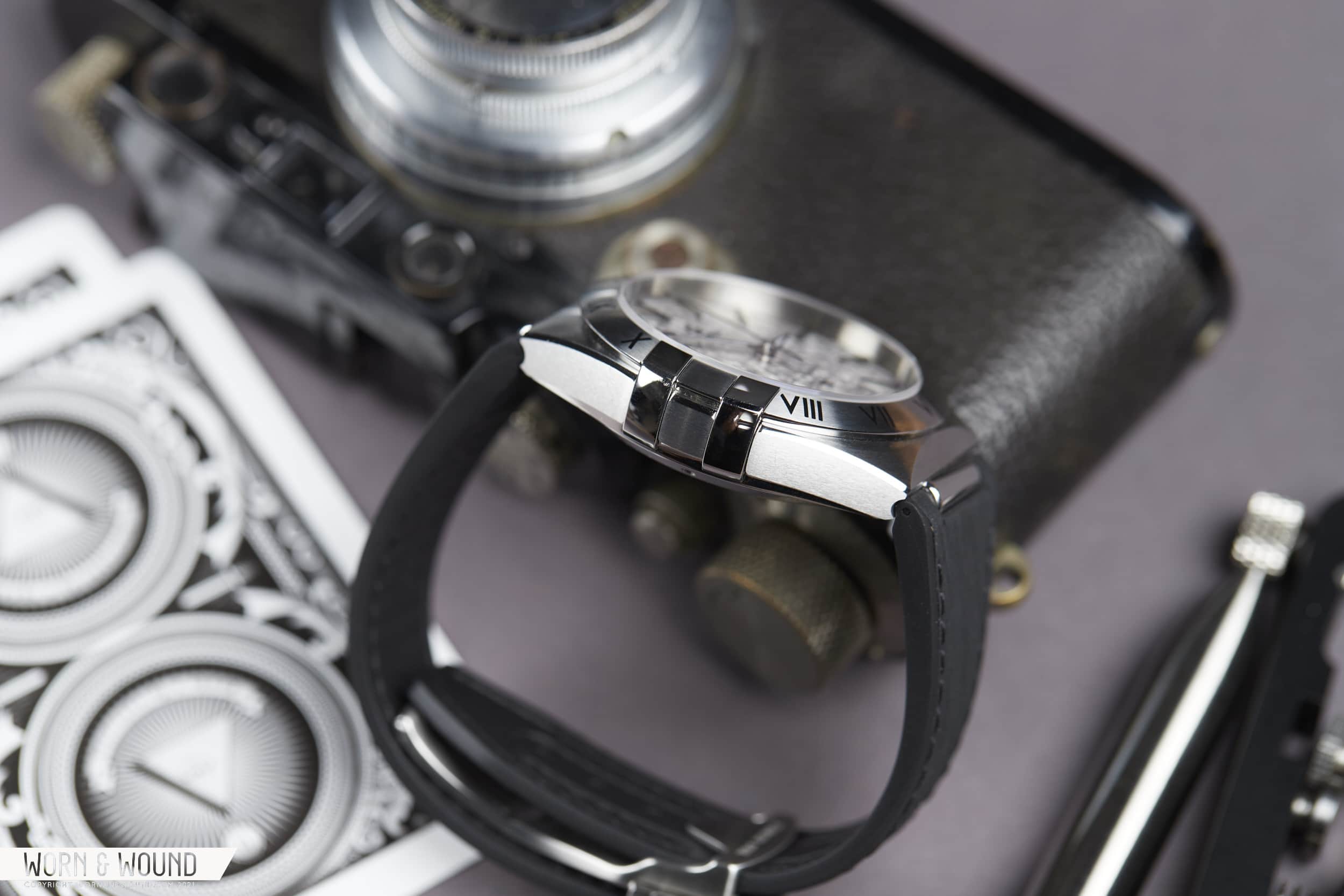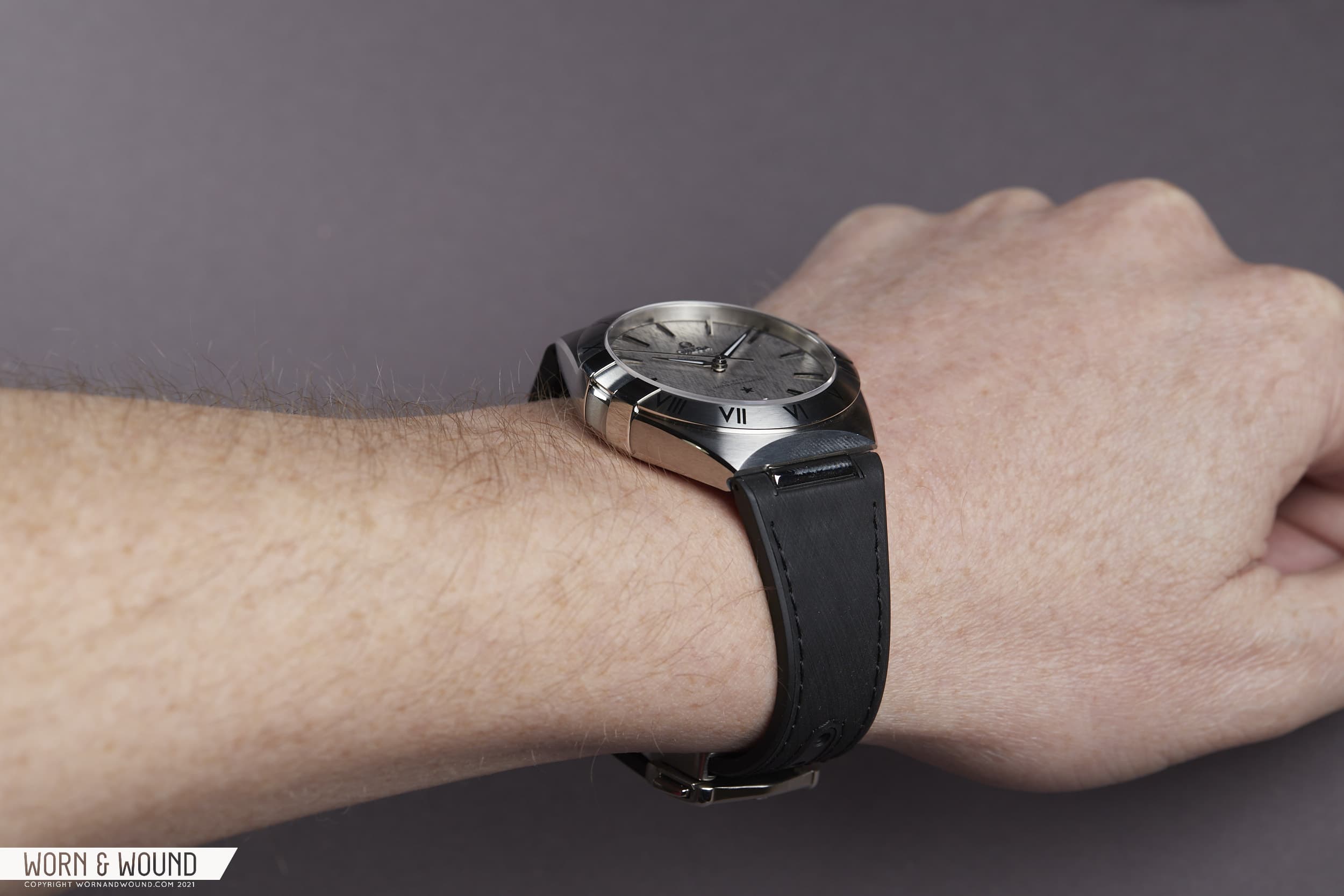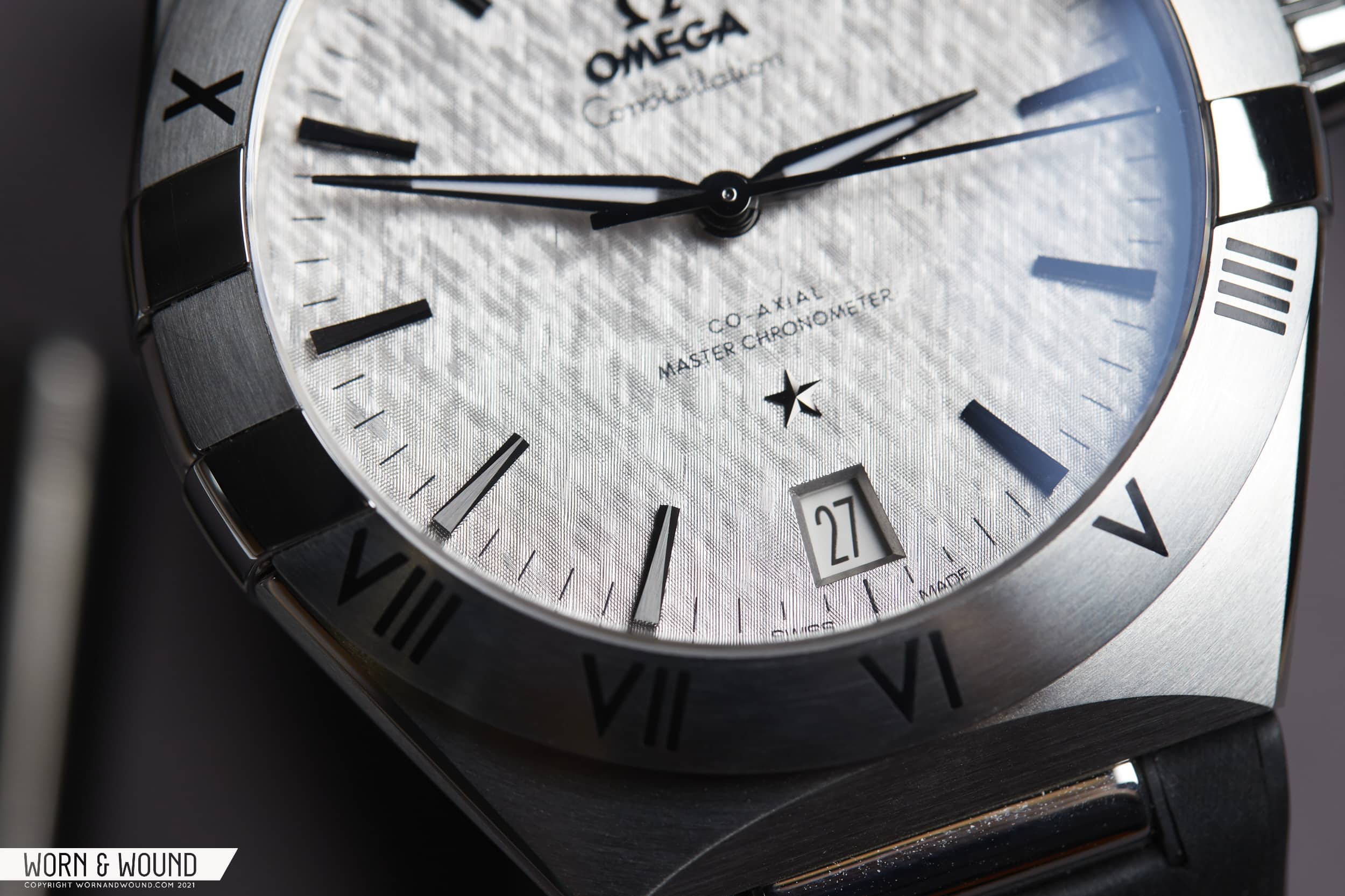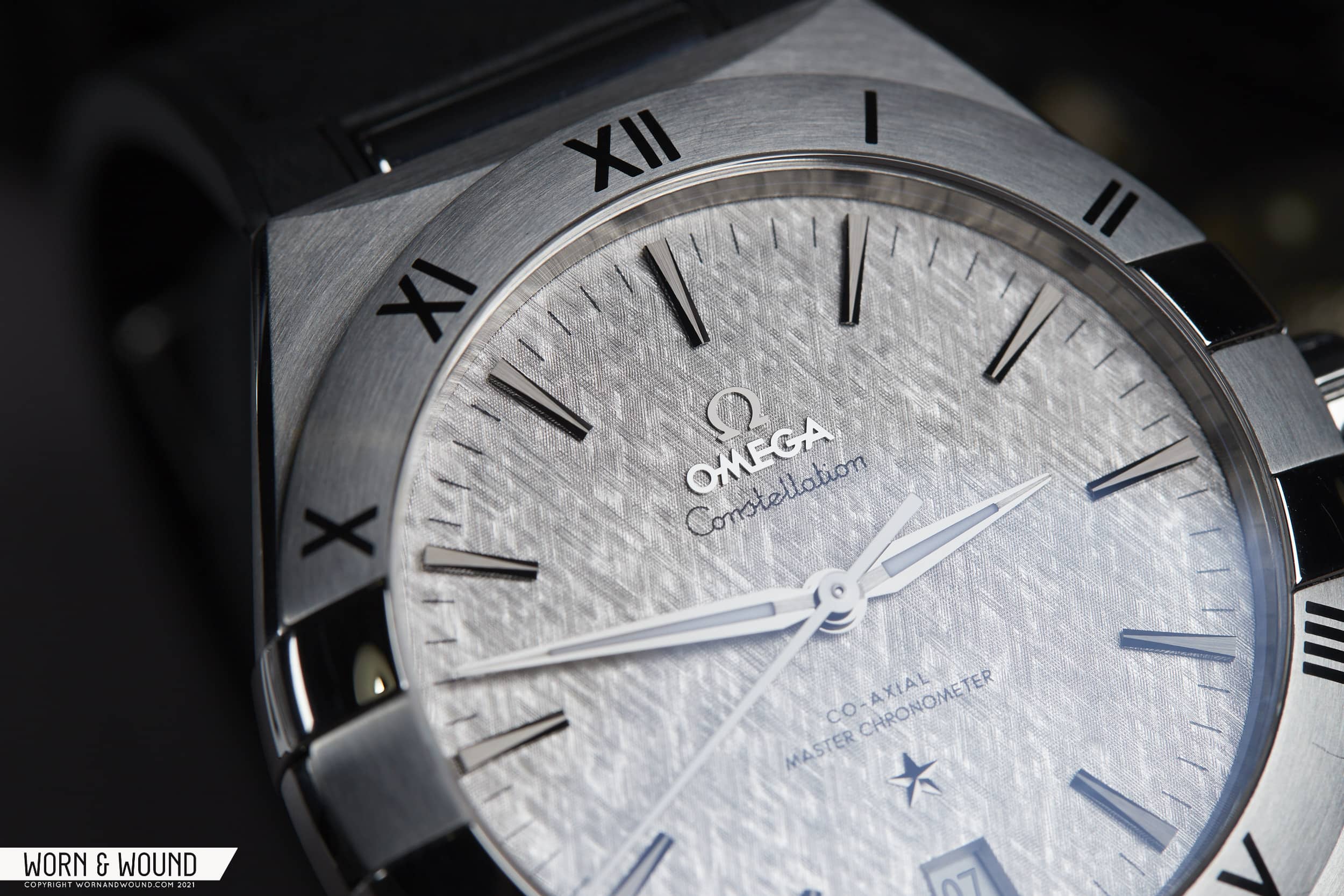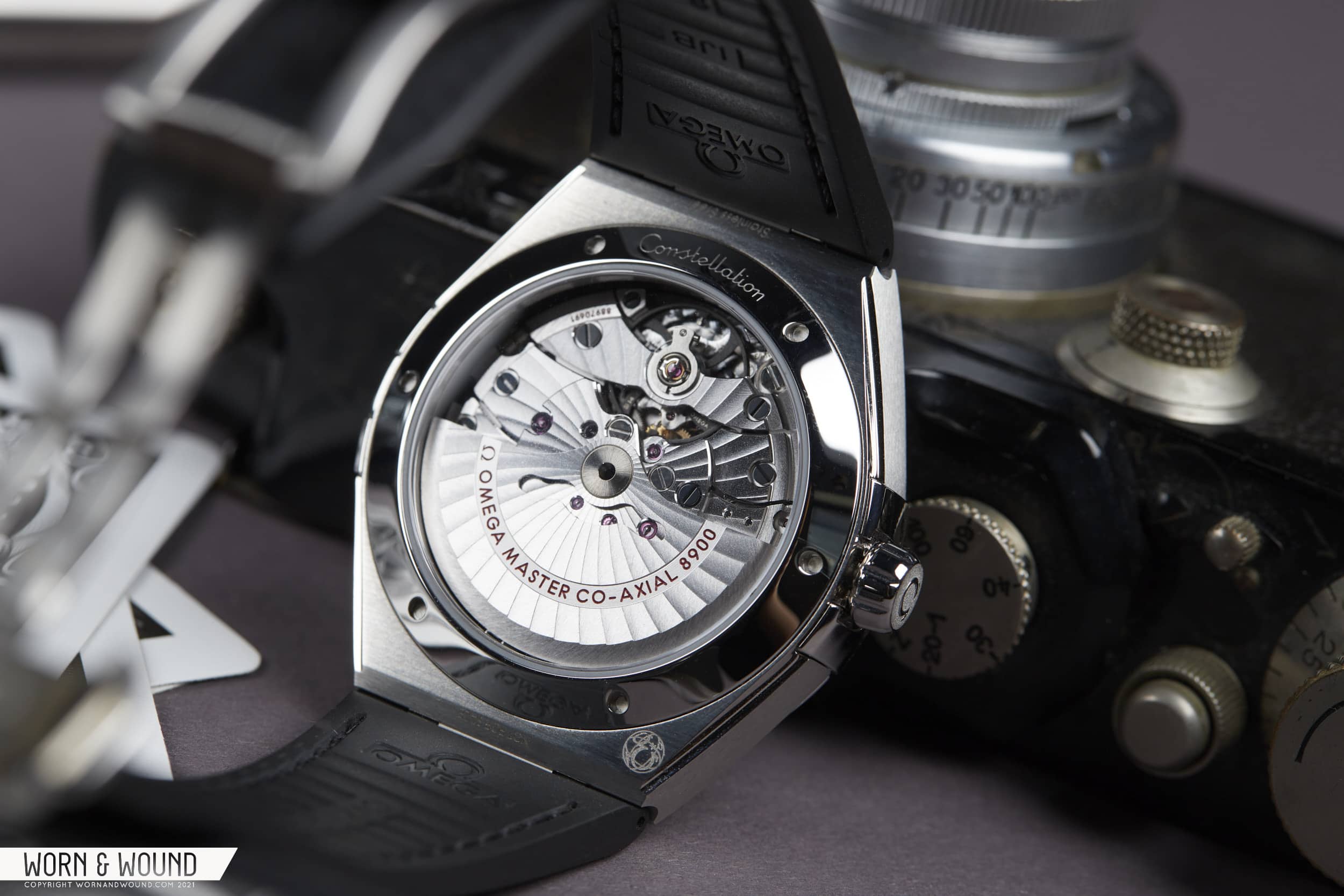The Omega Constellation can be a bit of a touchy subject for enthusiasts. It’s a watch that’s held fast to its early ‘80s form that first debuted with the Constellation Manhattan, and thanks to the cyclical nature of fashion trends, is finding itself in the right place at the right moment these days. Of course, the history of the Constellation is diverse, beginning in the early ‘50s and with some of the most beloved dress watch designs to ever come out of Omega, even to this day. The Constellation name represents two very different sides of the same coin, and with Omega expanding the collection further, we thought it’d be wise to give it a fair crack with some wrist time.
Hands-On With The Omega Constellation
Hands-On With The Omega Constellation
A Brief History
The seeds of the Constellation were planted with a watch built to celebrate the brand’s 100th anniversary, which happened in 1948. That watch was called the Centenary, and it provided the foundation for what would become the Constellation proper in 1952, both mechanically (with the 331 ‘bumper’ movement) and aesthetically (‘Lyre’ lugs and dauphine hands). It was a great looking watch and, unsurprisingly, the Constellation that followed was pretty good looking as well.
The Constellation saw a number of variants and upgrades through the years, from sniper dials to precious metal cases, and of course, that pie pan dial. Ah yes, the pie pan dial, a detail that likely pulled many of us into the world of vintage watch collecting. These dials feature a raised central stage that falls off at angles created by connecting the hour markers. These watches had character that holds up today as original and approachable, and thankfully prices haven’t become obscene on nice examples. These are the Constellations that many of us think of when we hear the word, but this is a watch that has never really stood still.
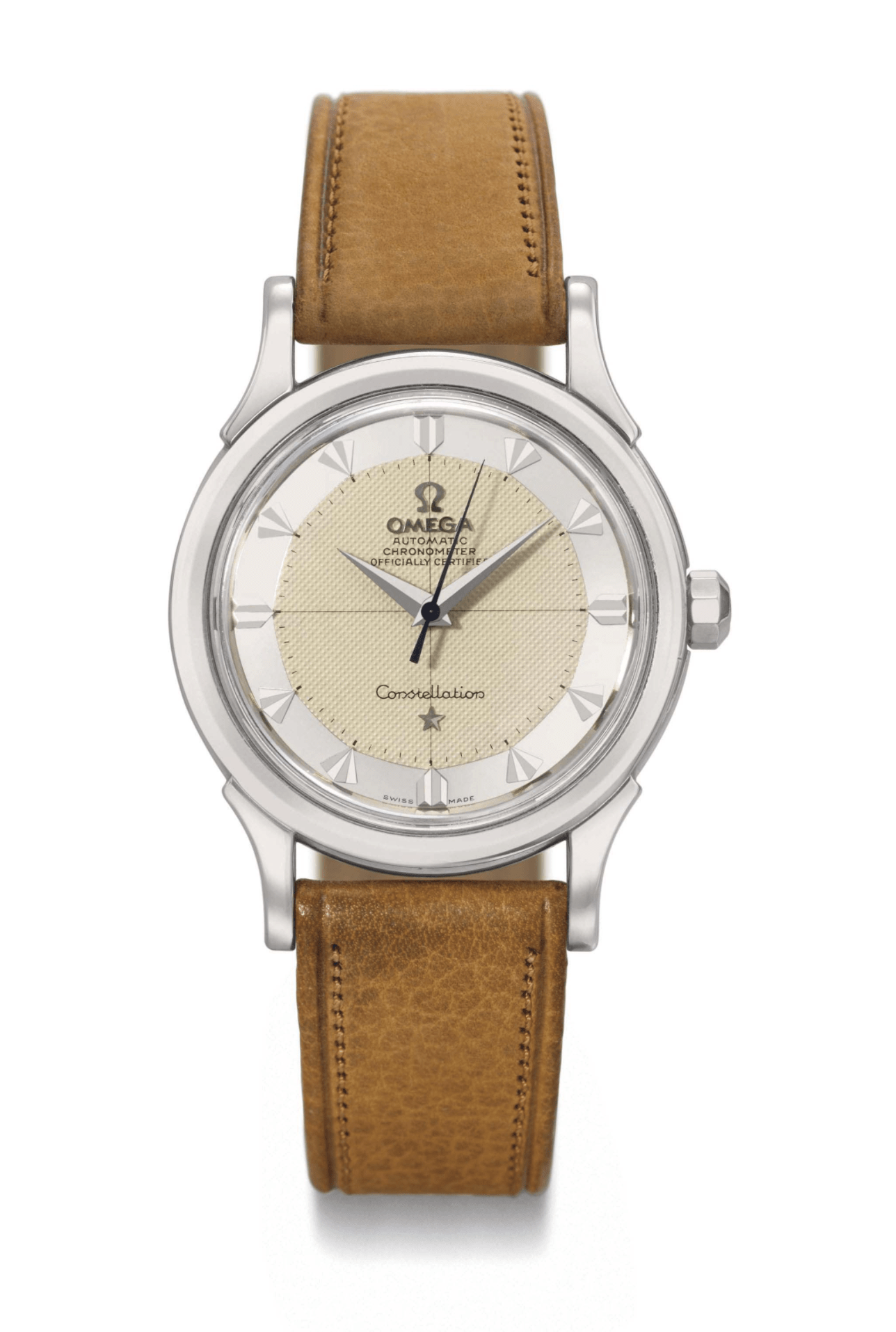
Let’s pause for a moment to acknowledge that Omega does indeed honor this very aesthetic within the Globemaster side of the Constellation family, complete with the pie pan dial, star at 6 o’clock, and observatory medallion on the caseback.
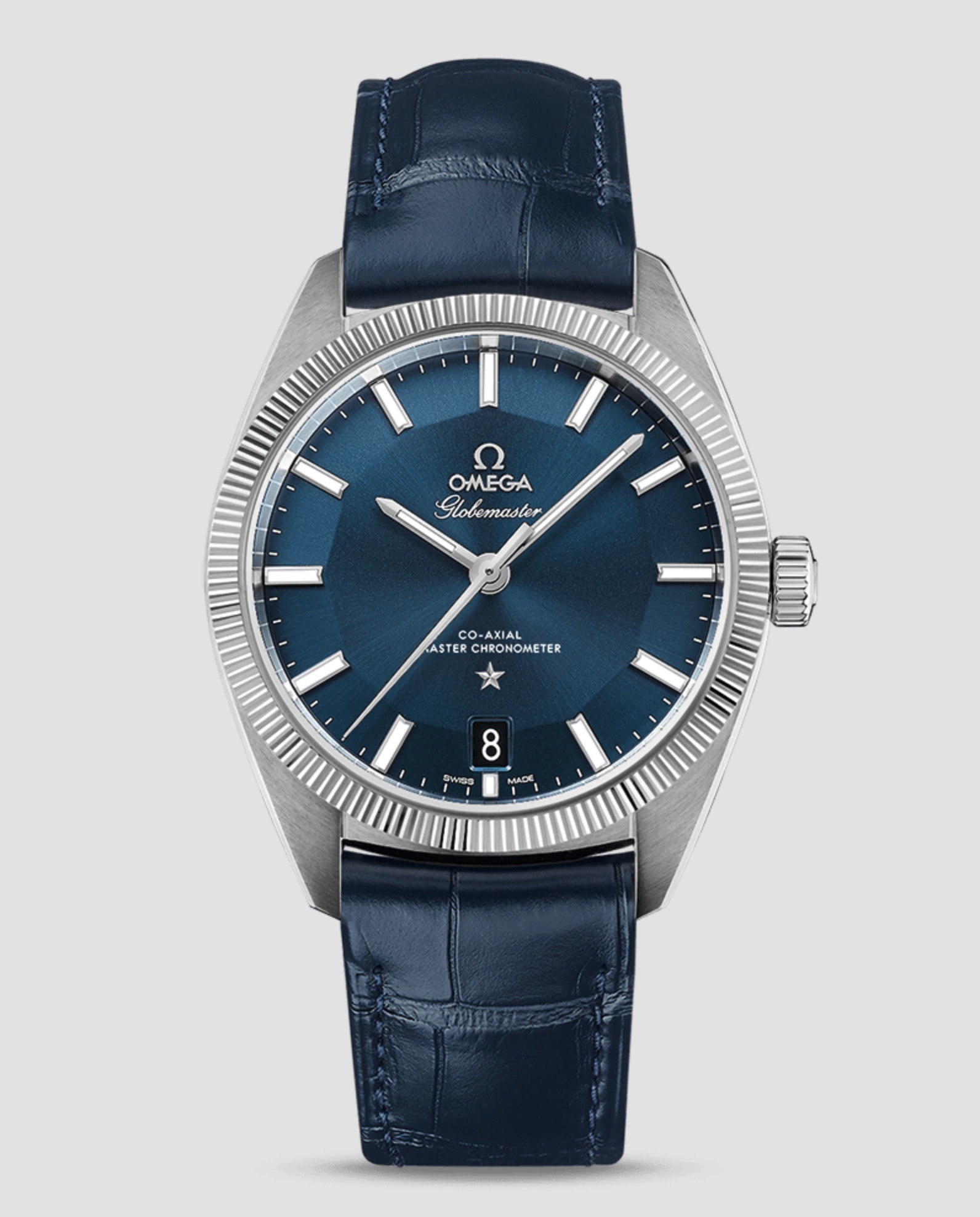
The Constellation received its first major redesign in the mid ‘60s with the so-called C-Case, bringing an era specific design that integrated the lugs more directly into the shape of the case. Word has it that Gerald Genta, who worked with Omega under contract from the mid ‘50s, contributed to this design as well. The C-Case references were obviously emblematic of their time and showed off a remarkable dexterity of the Constellation ethos.
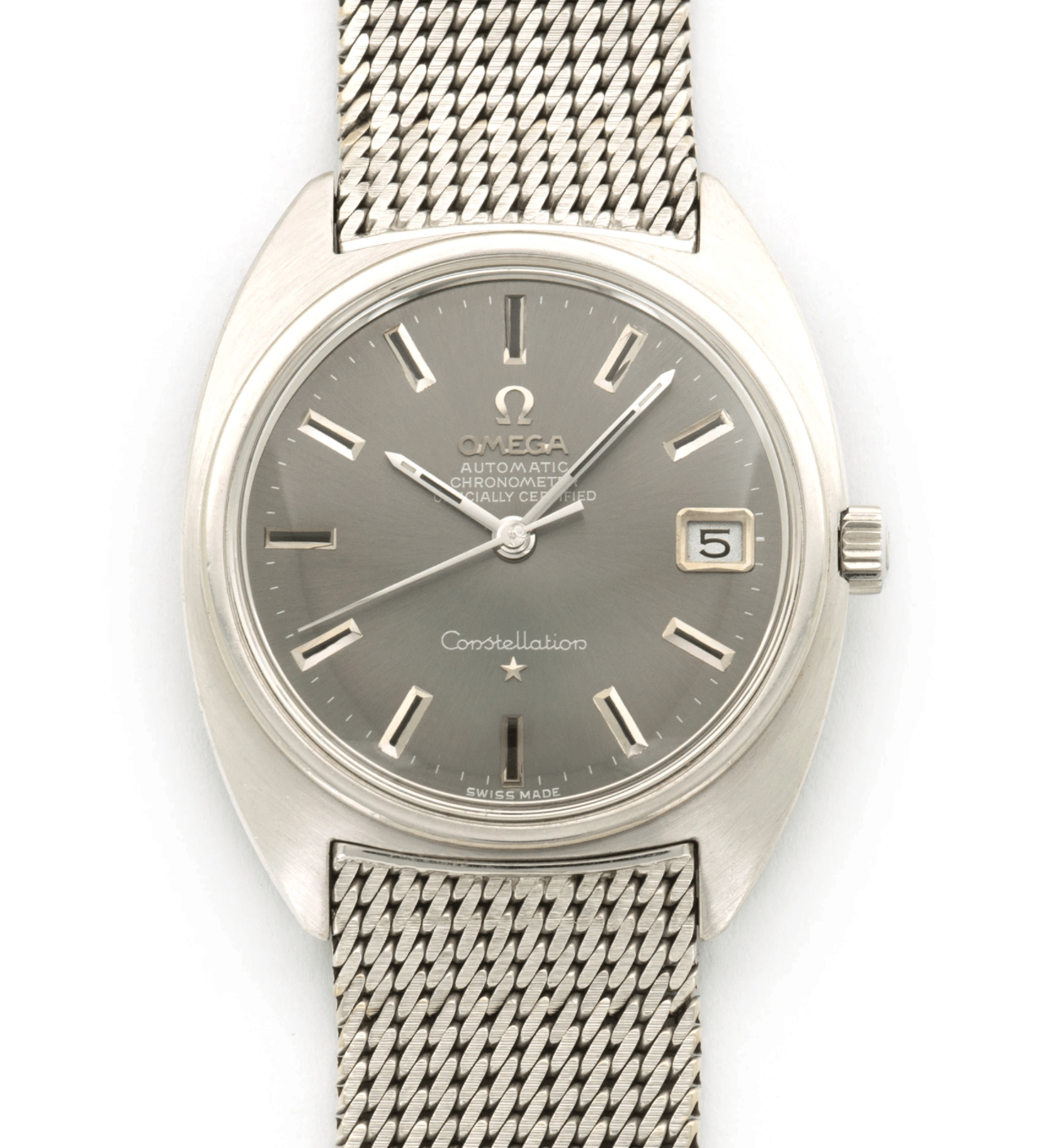
As the quartz era came, so too did square cased, battery powered Constellations, eager to be on the forefront of the brand’s technological prowess. That adaptability is among the defining features of the Constellation, right up to the early ‘80s, and the introduction of the Constellation Manhattan, that is.
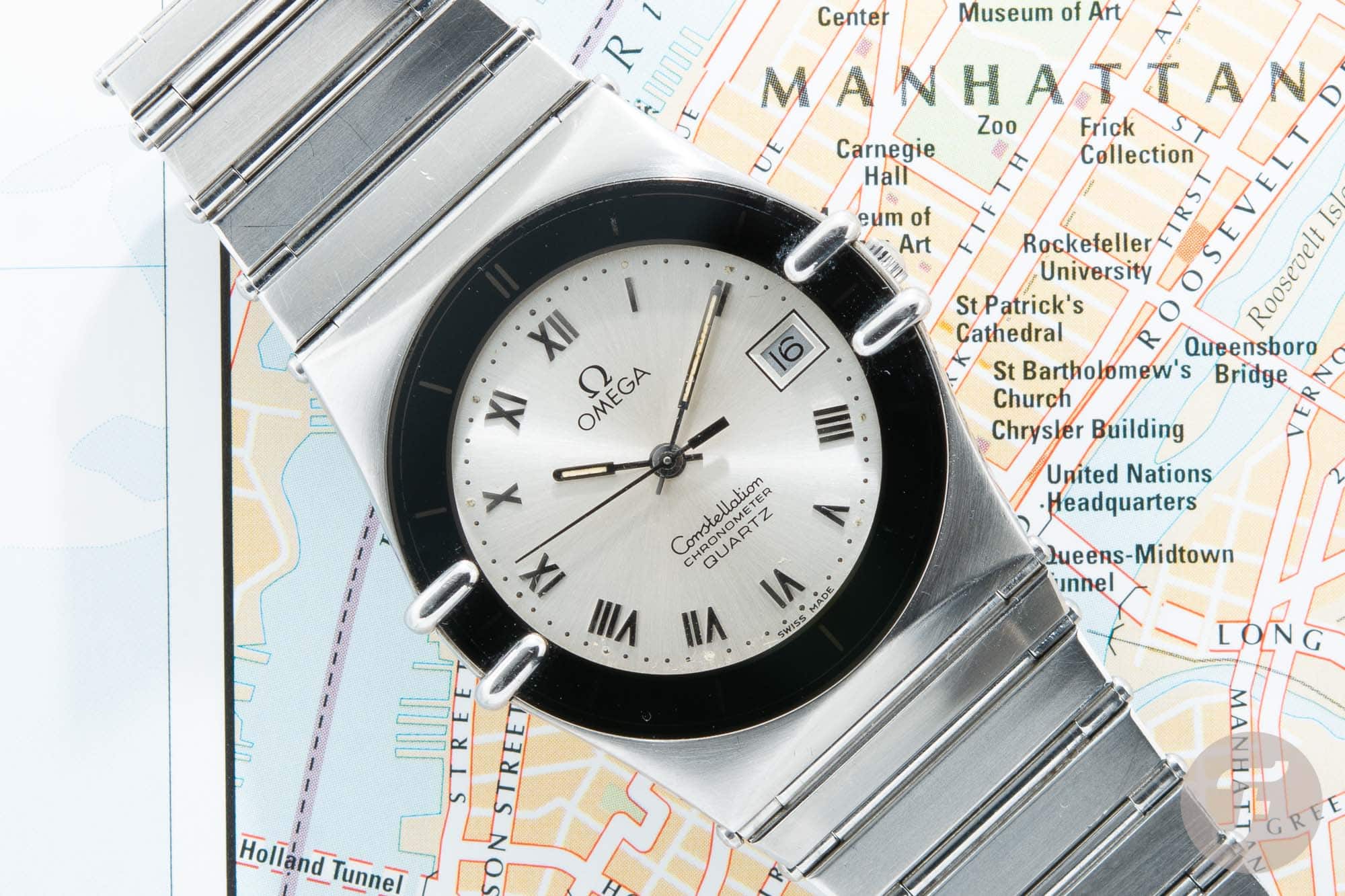
The Manhattan saw the first use of the so-called ‘claws’ that held the bezel and crystal in place at 3 and 9 o’clock. The case leaned into the fully integrated look, with no lugs to speak of in sight. Again, the look was befitting of the era, but rather than continue to ebb and flow with the trends, this is a look that stuck. That doesn’t mean the watch stopped innovating, however. The Constellation received Omega’s first co-axial equipped caliber 2500 in 2003, and has slowly evolved since in a range of complexity and configuration.
The Modern Constellation
Today, the Constellation follows the same blueprint first put forth in the ‘80s, albeit with a far more contemporary palette of colorways on offer. The ‘claws’ are still present at 3 and 9 o’clock, serving as ornamental features that I suspect will largely fall into the “love it or hate it” realm with few in between. You’ve probably noticed the resurgence of the steel integrated case in recent years, like clockwork, bringing the Constellation once again back in line with modern tastes. Kind of.
Today, the full Constellation collection is over 150 variants deep. Sizes range from 35mm to 41mm, steel and precious metals, diamonds, MoP, two-toned… you name it, it’s probably in there. Featured here is the latest 41mm case with steel bezel and light-grey feathered dial. They do make a 39mm variant of this watch, which would likely cure the few niggles I found while wearing this one, but the 41mm is well within reason if you pay attention to the numbers. But, the numbers don’t always tell the full story on the wrist.
Comparing this watch to the Speedmaster, which measures 42mm, highlights just how important the shape and profile of the case really is. The Speedmaster wears far smaller than the Constellation thanks to the sheer volume of the case. There’s a lot of metal here that’s absent on the Speedmaster, and you feel that. By the calipers, the Constellation actually measures 40mm between the claws, and 41mm from the claws. It is 14mm thick, and measures 44mm from tip to tip, excluding the single protruding articulating link (include that and the measurement hits 49mm). Again, none of the numbers are offensive by any stretch, but it’s the space between them that gives the full picture here.
Most importantly, this is a watch you feel on the wrist. The Speedmaster (especially with the new bracelet) has a way of melting off the wrist through the day, you just barely notice it, with the Constellation, I found myself taking it off and setting it beside me while I went about my business. Seeing this case in 39mm would presumably change the calculus here in a big way for my wrist, but YMMV. The textured rubber strap and deployant clasp are well executed here and performed their duties adequately securing the watch to the wrist with little drama to speak of.
I found the most interesting element of this watch to be the dial. Dial color and texture is the real battlefield these days between brands, and while there may not be a green dial Constellation (yet), the texture Omega is pulling off here is really interesting. In most light, the effect is subtle, but can swing to dramatic quickly in a manner not dissimilar to meteorite. Up close, the texture looks like small cross hatched feathers that catch the light with some dimensionality. Omega makes no mention of the dial on the product page other than to label it, rather unceremoniously: “grey”. The remainder of the dial is rather straightforward, aside from the trapezoidal date aperture at 6 o’clock, whose stark white base stands in sharp contrast with that lovely dial.
As a whole, there are really only two elements that date this (otherwise on trend) design: the polished claws, and the etched roman numerals around the bezel. My feeling on roman numerals is that they can be tricky to pull off properly, but when done right, they can really sing. Appearing etched into the steel bezel here, they feel a bit out of place to my eye. More importantly, they seem redundant when paired with the long hour batons already on the dial, which are highly legible, and quite handsome. Likewise, the polished claws are an odd sight taken on their own, but taken together, there’s a certain vibe this watch has that, regardless of your feelings on the individual pieces, will leave you saying “I get it”. This watch is like the 996 generation 911, it’s odd and there’s a few design choices that might leave you scratching your head, but it’s also kind of appealing as a result.
Also like the 911, the Constellation has a great engine in the back. Omega is using their automatic caliber 8900, equipped with a co-axial escapement. It’s Certified Master Chronometer, approved by METAS, and has 60 hours of reserve in the tank. Winding and setting actually presented the biggest frustration with this watch thanks to the fully polished crown, which features a domed design. The result is a crown that is exceedingly difficult to get any kind of grasp on.
I’d really love to see Omega’s manual winding caliber 8910 make an appearance in this watch and about 4mm shaved off the thickness. This unique case design absolutely begs for slimmer proportions, and the level of wearability would increase dramatically as a result. The underlying truth to the ‘hype’ sport watches out there like the 5711 and 15202 is how sublime they wear on the wrist, and it’s also the most difficult thing to reproduce. Omega has the pedigree here and I think the Constellation, with a few tweaks, would really be in a different level of discussion with collectors and enthusiasts.
The Constellation certainly isn’t a watch for everyone, and the quirky features are easy to make light of, but I love watches that stubbornly refuse to compromise on their originality. You probably won’t see many of these on IG or at your local meet up, but in a sea of ‘same’, the Constellation stands alone. Likewise, find the person with the 996 at your local car meet and the odds are good you’ll have a much more interesting discussion on your hands.
This example of the Constellation is priced at $5,850, putting it in some pretty strong company. Again, the value is there with this movement and nameplate (if that sort of thing means anything to you), and the build quality is exactly what you’d hope to find in this range. Prices go up from there but you can find some lovely blues and golds also available within the collection. If you pride yourself in going against the grain a bit when it comes to fashion, the Constellation could be right up your alley. Omega.









 Featured Videos
Featured Videos




